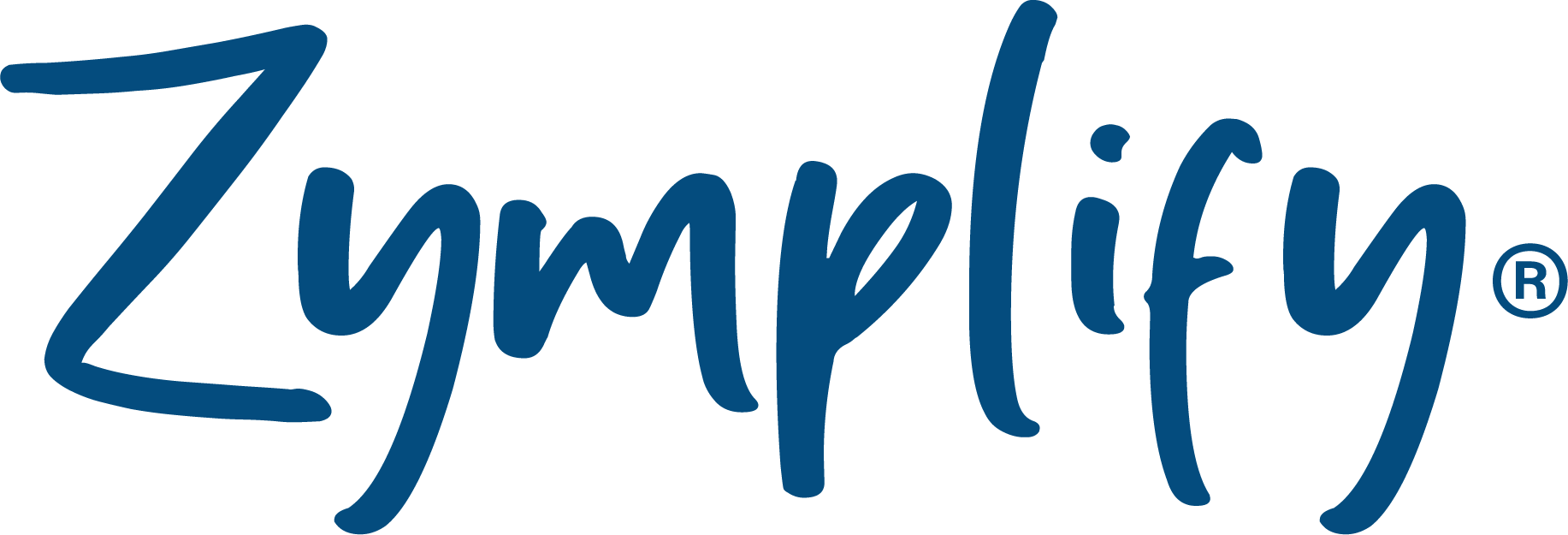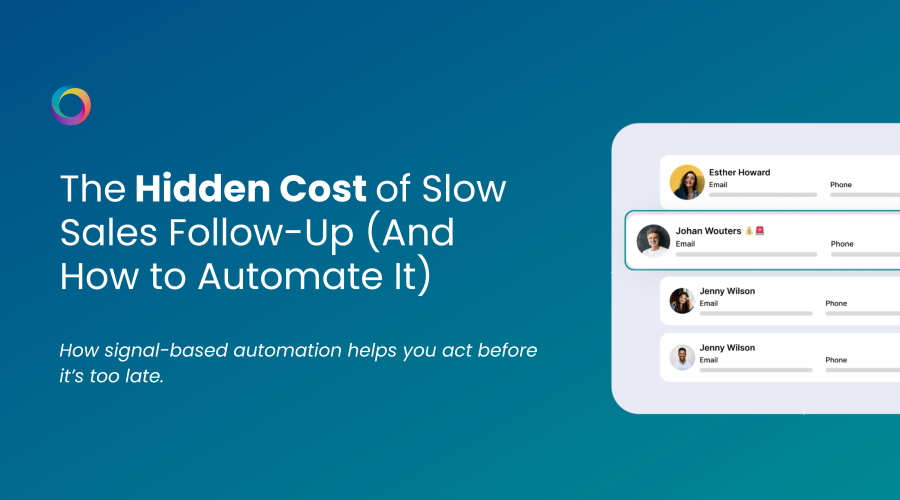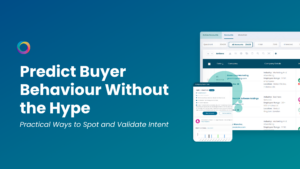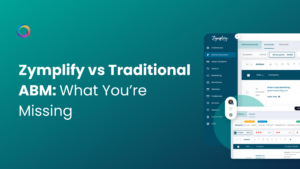Why timing kills deals — and how signal-based automation helps you act before it’s too late.
You’ve just captured the perfect lead.
An in-market account from your ICP downloads a case study, visits your pricing page, and even compares you to a competitor on G2.
You send the info to sales.
They get to it tomorrow.
Maybe the day after.
By the time someone reaches out?
The lead’s gone cold.
They’re already speaking with another vendor.
You’ve missed the moment.
This isn’t bad luck. It’s operational lag — and it’s quietly costing your business pipeline every single day.
In this blog, we’ll explore why slow follow-up is so damaging, what causes it, and how to fix it with signal-based automation — so you can engage faster and close more.
The Real Cost of Delayed Follow-Up
Most B2B teams think their biggest problem is lead volume or lead quality. But more often, it’s lead timing.
Buyers today move fast. They do their research behind the scenes, loop in stakeholders late, and often make shortlists without ever filling out a form.
When a buyer does raise their hand or trigger a surge in behaviour, you don’t just have an opportunity — you have a small window.
Here’s why timing matters:
- 50% of deals go to the vendor that follows up first
(Lead Connect) - Sales teams that respond within 5 minutes are 9x more likely to convert
(InsideSales.com) - Yet the average follow-up time is over 42 hours
(Drift)
That delay creates a huge gap between buyer intent and GTM execution. And in that gap? You lose deals.

What’s Slowing You Down?
If you’ve ever said “Why didn’t we follow up on that lead sooner?” — the answer is likely somewhere in your tech stack or handoff process.
Here are the most common culprits:
1. Disjointed Tools
- Your intent signals live in one platform
- CRM is somewhere else
- Cadences are managed manually
- Alerts go out via email (if at all)
By the time data moves from one tool to another, you’ve already missed the moment.
2. Manual Workflows
- A marketer has to review leads and forward them
- An SDR manually adds them to a sequence
- There’s no clear trigger for what gets actioned first
This eats up hours — and creates inconsistency across the team.

3. Static Scoring Models
- Lead scores don’t account for buying-stage signals
- Sales reps waste time on “high-score” leads that aren’t actually ready
- Meanwhile, real signals go unnoticed
In short: Your funnel is working on lag. But your buyers are moving in real time.
What Fast, Automated Follow-Up Looks Like
So how do modern GTM teams solve this?
They stop waiting.
They start listening.
And they automate based on real buying signals — not generic lead scores.
Here’s what that looks like in practice.

✅ Step 1: Detect Buying Intent in Real Time
With Zymplify, you can track surging interest across 20+ integrated intent sources — from Foundry and G2 to content engagement and CRM activity.
You’ll see:
- Which accounts are showing multi-source research spikes
- What stage they’re in using our Research Quadrant™ (Initial → In-Depth)
- Which contacts are actively researching your category or brand
No more guessing. Just validated buying behaviour.
✅ Step 2: Automate Instant Alerts and Cadence Triggers
When an account moves from “Interested” to “Active” — or a key decision-maker views your pricing page — Zymplify’s GTM Agent springs into action.
You can:
- Send instant Slack or email alerts to reps
- Auto-enrol contacts into outbound sequences
- Trigger follow-up emails, LinkedIn touchpoints, or retargeting campaigns
- Route high-priority accounts directly to the assigned rep’s CRM view
All without lifting a finger.
Example:
A CRO at a mid-sized FinTech company surges on your category, hits your comparison page, and triggers a Research Quadrant™ stage change to “Active.”
Zymplify automatically adds them to a tailored cadence, notifies your AE in Slack, and updates the deal stage in CRM — all within 5 minutes.

✅ Step 3: Align Marketing + Sales Around Signal
This isn’t just about speed. It’s about alignment.
When your entire GTM team operates from the same set of live signals — and shares one view of buyer readiness — follow-up becomes consistent, scalable, and high-converting.
- Marketing no longer sends cold MQLs
- Sales focuses only on warm, validated buyers
- RevOps can track what actually drives pipeline — and what doesn’t
You eliminate the friction between “lead gen” and “lead engagement.”
You’re not reacting to clicks. You’re responding to readiness.
Final Thought: Timing Kills Deals — Or Closes Them
You can’t afford to be slow.
In B2B, your competitors are seconds away.
Your buyers are anonymous — until they’re not.
And your follow-up window is tighter than ever.
So when a real signal appears, you need to:
- See it
- Score it
- Act on it — fast
That’s the difference between a cold call and a booked meeting.
Between missed potential and closed revenue.
🎯 Try Zymplify’s GTM Agent for Free Today
Zymplify’s GTM Agent helps you:
✅ Spot surging accounts in real time
✅ Trigger instant follow-up when timing matters
✅ Move from signal to cadence — without the wait
No more lag. No more missed moments.
Just revenue, activated.





